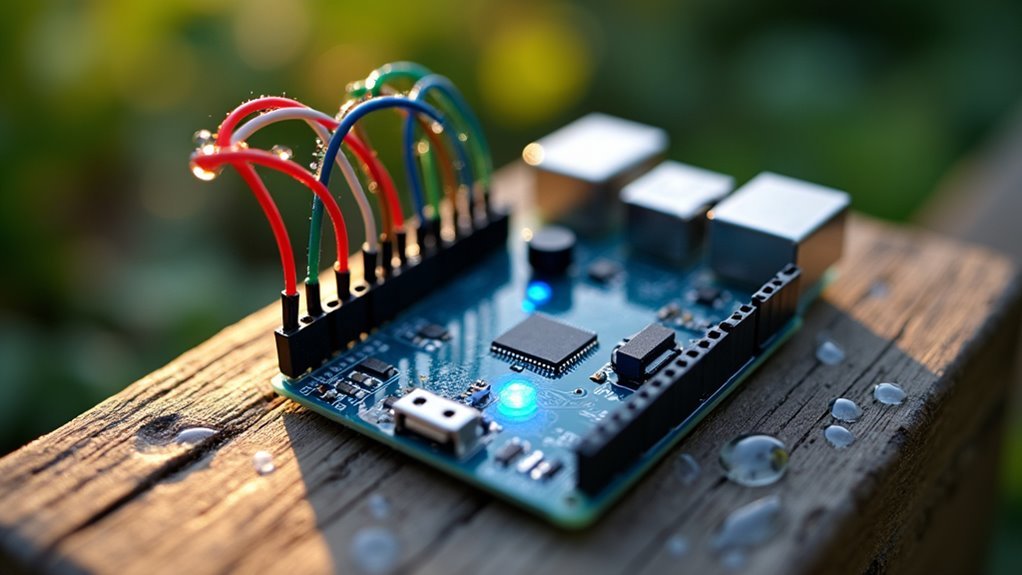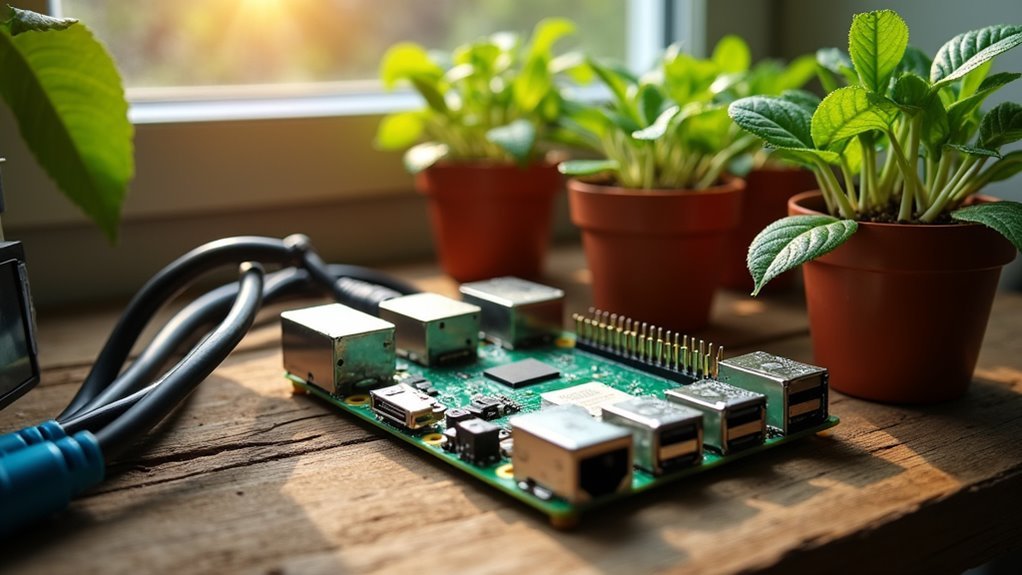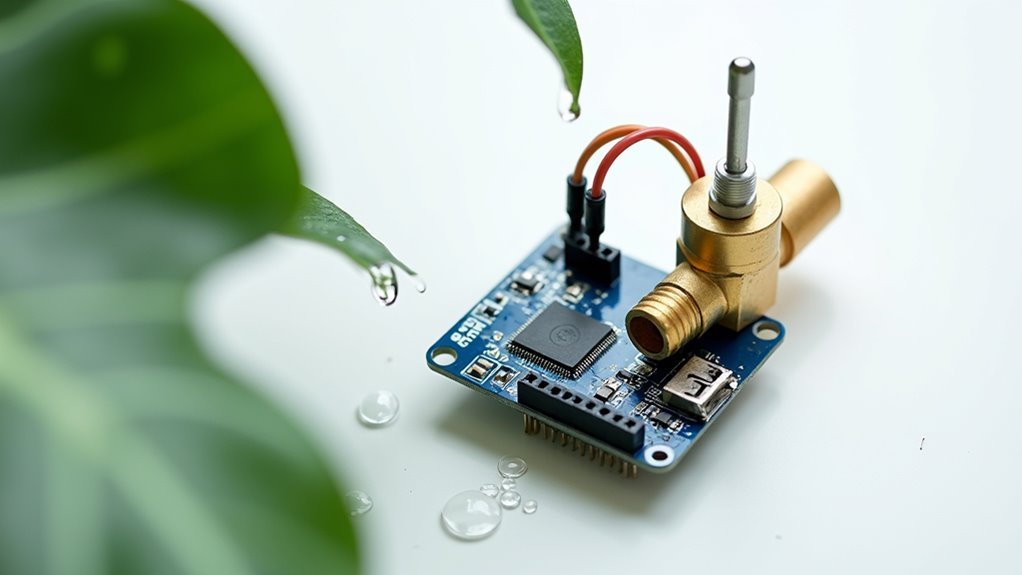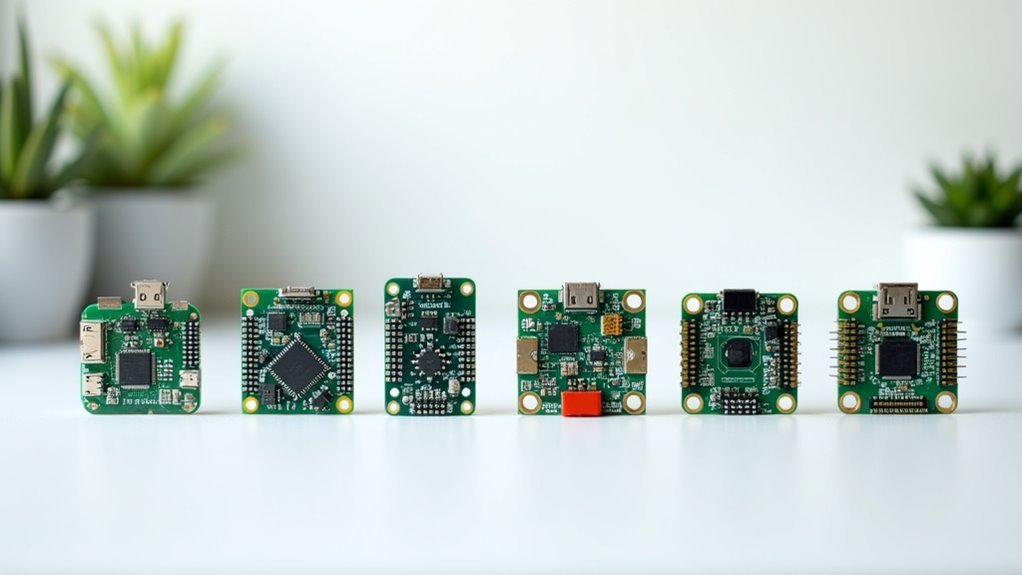You’re probably tired of manually watering your plants or dealing with basic timers that can’t adapt to changing conditions. MQTT controllers offer the precision and automation you need, but choosing the right one isn’t straightforward. Whether you’re managing a simple indoor garden or a complex multi-zone irrigation system, the controller you select will determine how efficiently your plants receive water. The five options ahead each solve different challenges.
Nodemcu-Based MQTT Sprinkler Controller With Multi-Zone Support

When you’re managing multiple garden zones with varying irrigation needs, a NodeMCU-based MQTT sprinkler controller delivers the flexibility and precision you need.
This system supports up to two dedicated zones, each controllable through unique MQTT topics that integrate seamlessly with your existing smart home setup.
You’ll customize your Home Assistant interface to match your garden’s specific conditions, receiving real-time updates on watering schedules and zone status.
The controller connects to sprinkler valves while monitoring each soil moisture sensor to determine ideal watering times. Weather prediction data prevents unnecessary irrigation when rain’s forecasted, saving water and protecting your plants.
Each zone operates independently with personalized schedules, and you’ll track remaining watering time through the countdown timer feature, ensuring your irrigation system runs efficiently.
OpenSprinkler OS 3.3 Smart Web-Based Controller
Scalability becomes essential as your irrigation needs expand beyond basic garden beds, and the OpenSprinkler OS 3.3 Smart Web-Based Controller rises to meet those demands with support for up to 72 zones.
This open-source controller integrates seamlessly with existing sprinkler systems as a drop-in replacement, eliminating costly infrastructure overhauls.
You’ll appreciate the built-in WiFi connectivity and OLED display that enable control through web browsers or the mobile app.
The system’s compatibility with 24VAC, latching, and DC solenoid valves provides setup flexibility for diverse applications.
Smart algorithms automatically adjust watering schedules using real-time weather data, preventing overwatering while optimizing water usage.
Real-time weather integration prevents water waste through intelligent schedule adjustments that optimize irrigation timing automatically.
For MQTT enthusiasts, you can integrate this controller into broader home automation systems, creating sophisticated irrigation networks that respond to environmental sensors and scheduling protocols.
Raspberry Pi MQTT Plant Watering System With Weather Integration

Building your own MQTT plant watering system with a Raspberry Pi transforms this affordable single-board computer into a powerful irrigation controller that rivals commercial solutions.
You’ll create an intelligent sprinkler controller that adapts to environmental conditions automatically. Your Raspberry Pi serves as the central MQTT broker, coordinating communication between sensors, weather data APIs, and watering components.
Weather integration through BOM or OpenWeatherMap APIs enables smart scheduling based on rainfall predictions and current conditions.
Essential components for your system include:
- Soil moisture sensors (Xiaomi MiFlora or Ecowitt) for real-time monitoring
- Relay modules controlling solenoid valves for multi-zone watering
- Weather API integration for precipitation forecasts and temperature data
MQTT’s lightweight protocol guarantees real-time communication between all devices, creating an efficient automated irrigation system that waters only when necessary.
ESP32 Wireless Plant Monitoring Controller With Soil Sensors
Your ESP32 microcontroller transforms into a sophisticated wireless plant monitoring powerhouse when paired with precision soil sensors.
With dual-core processing and built-in WiFi, you’ll create an efficient watering system that monitors up to 18 plants simultaneously through its analog inputs. The ESP32’s MQTT capabilities enable real-time data transmission to your home automation server, triggering automated irrigation based on precise moisture thresholds.
You can integrate affordable capacitive soil moisture sensors for just $0.43 each, eliminating corrosion problems that plague metallic alternatives.
The Arduino framework compatibility means you’ll easily customize your monitoring logic and watering schedules. Your ESP32-based system delivers professional-grade plant care automation while remaining accessible for DIY implementation, making it an ideal MQTT controller for thorough garden management.
Arduino-Compatible MQTT Valve Controller for Indoor Gardens

When precision irrigation meets smart home automation, an Arduino-compatible MQTT valve controller becomes the cornerstone of your indoor garden management system.
You’ll achieve precise water distribution across multiple zones using solenoid valves controlled through MQTT commands, ensuring each plant receives ideal hydration.
Your ESP8266 or NodeMCU microcontroller provides WiFi connectivity for seamless remote control via smartphone or computer.
Integrated moisture sensors automate watering schedules based on real-time soil conditions, preventing over-watering while maintaining plant health.
Key advantages include:
- Multi-zone programming – Configure individual watering schedules and durations for different plant types
- Smart home integration – Connect with weather data and other devices through your MQTT server
- Water efficiency – Automated moisture-based irrigation reduces waste and enhances plant care
Frequently Asked Questions
What Type of Irrigation System Is Best for Water Conservation?
You’ll achieve maximum water conservation with drip irrigation systems, which use 30-50% less water than sprinklers. Adding smart controllers, soil moisture sensors, and rainwater harvesting can reduce your water usage even further.
What Is an Iot Based Energy Saving Automatic Watering System for Plants?
You’ll use sensors to monitor soil moisture and weather conditions, automatically watering plants only when needed. It connects to your smartphone, preventing waste while maintaining ideal growing conditions through intelligent scheduling.
What Is the Best Way to Automate Watering Plants?
You’ll achieve best results by combining soil moisture sensors with programmable timers and weather data integration. This creates responsive irrigation that adjusts to actual plant needs while preventing overwatering during rain.
How Do You Water Outdoor Potted Plants When Away for a Week?
You’ll want to set up a drip irrigation system with a programmable timer or use self-watering pots with built-in reservoirs that’ll maintain consistent moisture levels throughout your week-long absence.





Leave a Reply